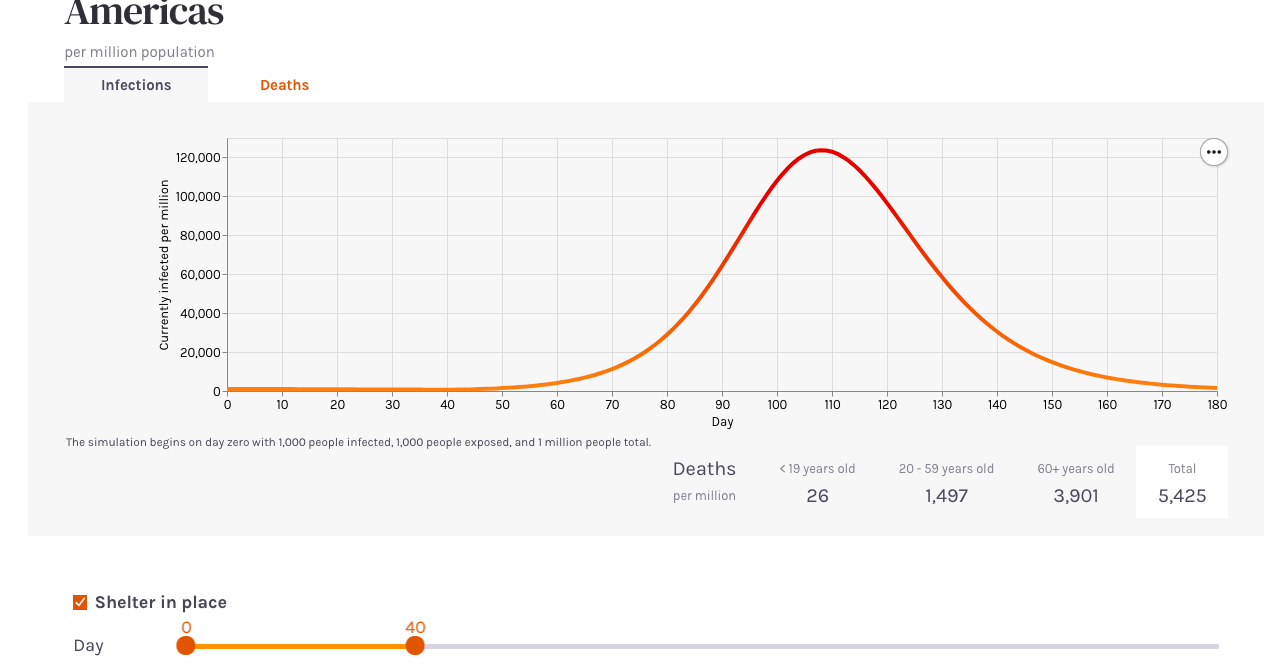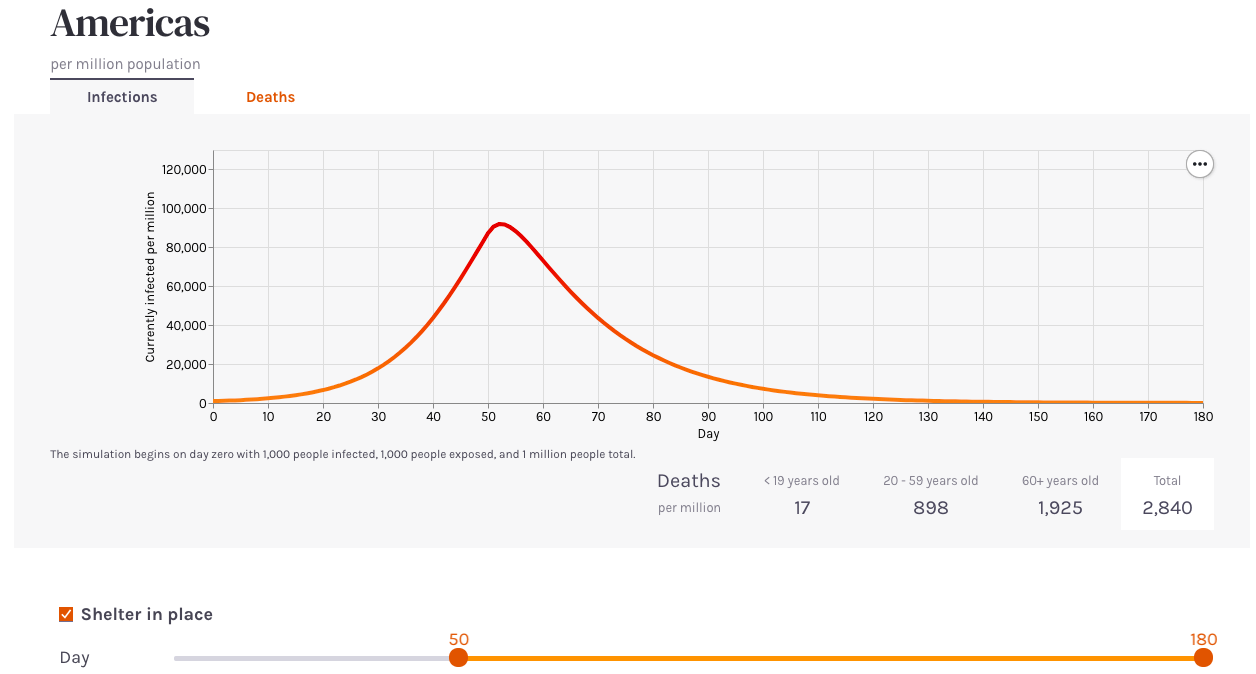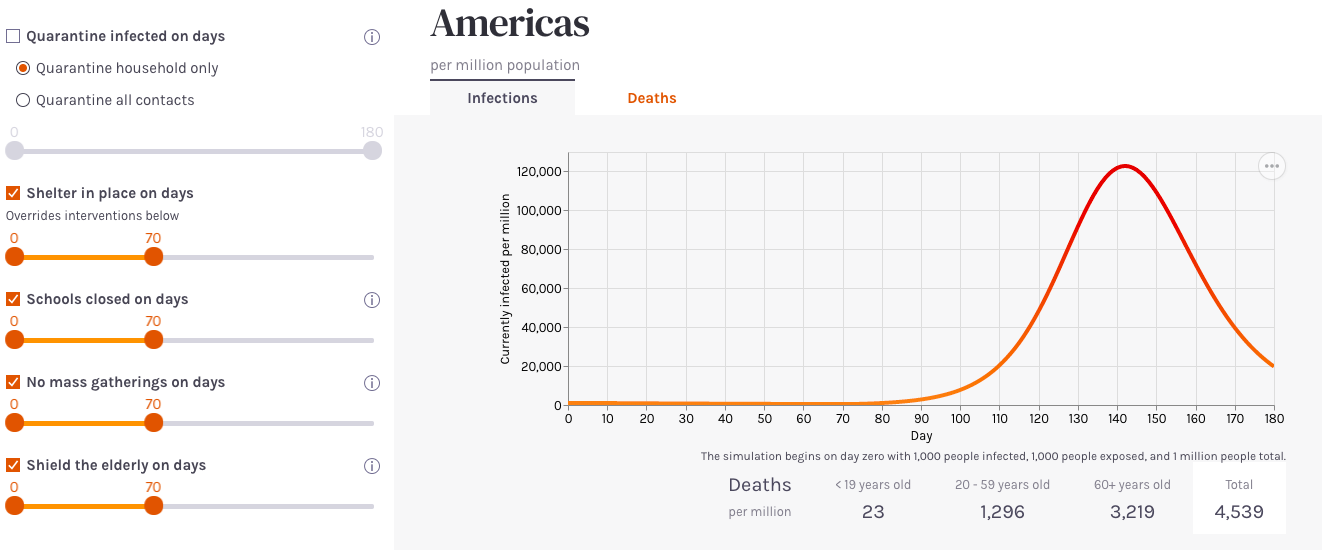Should we reopen the economy? What if people I love get sick?
I got tested and didn’t get the results for two weeks. What was the point?
Did sheltering in place even help? Infections rates are going up.
Covid-19 is one of the most disruptive global events to happen in our lifetime. Though there is still much to learn about the virus and the potential interventions that can curtail the spread and decrease infection rates, there are many experts working on getting the world back to baseline normal.
What is clear is that public health leaders and policymakers must make strategic, rapid, and thoughtful decisions based on evidence and science. Working with PreventEpidemics.org, we built an accessible tool to help inform both decision makers and the public at large.
PreventEpidemics.org is a project by Resolve to Save Lives, an initiative of Vital Strategies—a global health organization attempting to tackle the most challenging public health issues. PreventEpidemics.org is the world’s first website to supply country-specific data on epidemic preparedness.
We worked with Vital Strategies to build a simulation tool on PreventEpidemics.org that illustrates the impact of public health policies on COVID-19 transmission rates. As the world struggles with containment of the novel coronavirus, evidence that supports the effectiveness of public health and social measures, or PHSMs, is getting stronger.
Working collaboratively with the Prevent Epidemics team, who had already created a mathematical model and a prototype graph that could show the effects of individual public health interventions, Cloud City made it possible to combine interventions (for example, close schools AND request elderly people to shelter in place) by porting the original mathematical model from Python to Javascript. We drafted visual mockups that incorporated all of the elements from the prototype, inspired by the existing visual style of the PreventEpidemics.org website, and created an accessible UI that anyone could use to adjust the variables in the models.
The simulators take PHSMs such as quarantining the infected and their contacts, sheltering in place, school closures, and shielding the elderly, into account. Users can choose the geographic region of their choice, as the data can be specific to Africa, Asia, Europe, or the Americas. Though they should not be used as forecasting tools to predict new cases, these models can show how the timing of different combinations of PHSMs could influence disease spread and mortality rates. As an individual, it can be hard to gauge how much your own contribution is helping with lessening the brunt of the virus. However, these simulators show how much PHSMs do matter, especially when adhered to on a large scale.
The first simulator focuses on how the timing of shelter in place policies can affect the total number of infected individuals, as well as number of deaths. Both simulations begin on day zero with the assumption of 1,000 people infected, 1,000 people exposed, and 1 million people total. Deaths, measured per million, are divided by age groups, as research has shown mortality rates can be affected by both pre-existing medical conditions and age.
Users can toggle the start date, as well as end date of a shelter in place policy to see the influence that the timing has on infections and deaths. It is clear that early implementation of sheltering in place and other PHSMs can dramatically reduce the severity of an epidemic by limiting resource scarcity (hospital beds, medical supplies, etc.), resulting in more lives saved.
 image credit: PreventEpidemics.org
image credit: PreventEpidemics.org
Lifting the PHSMs too soon can result in a spike in cases.
 image credit: PreventEpidemics.org
image credit: PreventEpidemics.org
Even if implemented later, sheltering in place can work to “flatten the curve,” spreading out the rate of infection so as to not overwhelm the healthcare system.
 image credit: PreventEpidemics.org
image credit: PreventEpidemics.org
For many in the US and globally, the question is: once the curve has been flattened, then what? The second simulator takes into account the strategy of Boxing It In in order to reopen society safely. The four components of this plan consist of: expanding testing, isolating infected people, identifying contacts, and quarantining contacts. The model illustrates the success of social distancing measures when used along with Boxing It In strategy of quarantining contacts.
 image credit: PreventEpidemics.org
image credit: PreventEpidemics.org
Even with PHSMs such as closing schools, banning mass gatherings, and shielding the elderly, the number of cases will still spike once shelter in place has been lifted, if quarantining contacts is not part of the reopening strategy.
 image credit: PreventEpidemics.org
image credit: PreventEpidemics.org
Ultimately, there is no easy way to determine an optimal set of policies that will save the most lives while still managing to reopen society safely. Vital Strategies hope that these tools that can project the effect of PHSMs and Boxing It In will be helpful for policymakers to anticipate different transmission scenarios. We at Cloud City are proud to bring this vision to fruition.